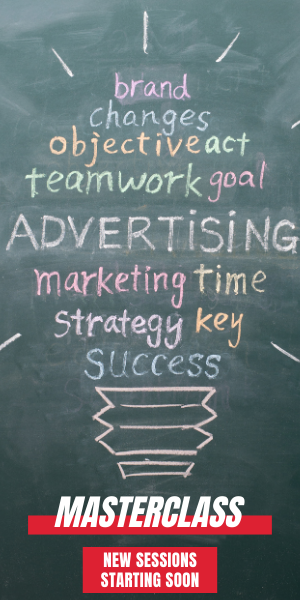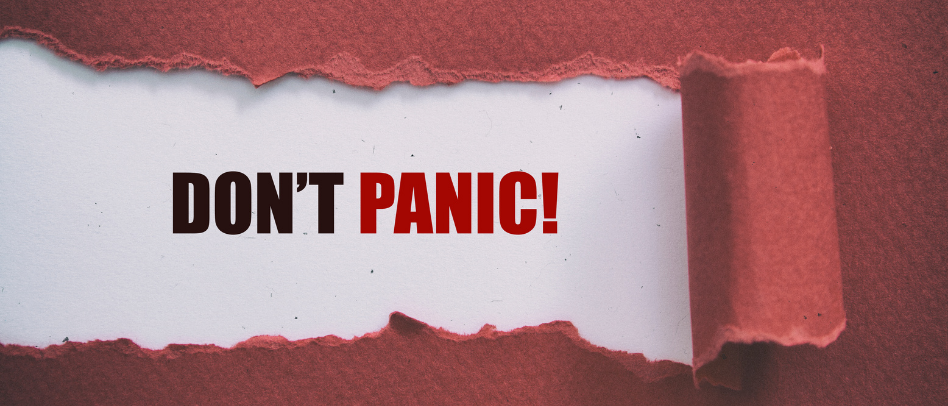Suppose you were a physician. A patient comes to you with symptoms. He has done what he assumes is the requisite WebMD and Google search and has determined his diagnosis: he needs an operation today. You clear your schedule and immediately operate.
Sounds ludicrous?
Suppose you were part of a Monday morning executive team briefing. A fellow executive saw a business run a popular marketing program, bringing record foot traffic over the weekend. There was a line of cars snaking their way to the parking lot for hours. He declares, “We need to copy that this weekend.” You leave the meeting and clear your schedule to create the same promotion.
Everything is on hold until you can get this out to the public. You get your team and agency to stop all projects and refocus on this one thing.
Sounds ridiculous? Probably. Sounds a little too real? More than likely.
This type of panic marketing is unfortunately the reality at many casinos.
Unless we recognize and plan to combat it, panic marketing can run rampant in our marketing departments.
But what is panic marketing and why is it so prevalent in the casino industry? As the name implies, it is marketing to quickly react to an external force or to leverage the latest trend.
Panic marketing has good intentions – to counteract a disaster of some sort – which is why it can be so insidious. Worse yet, we can often justify panic marketing as a means to “loyalize” customers – something that does not happen through marketing in and of itself.
Have you ever sent out a direct mail piece because your competitor dropped a very generous offer?
Have you ever matched tiers or offers to counteract what the competition was doing?
Have you ever reached the near end of a month and saw your revenue way behind projections and then dropped a supplemental in the mail in the hopes of stimulating an additional visit even though there were still active offers in the market?
Any of these types of reactive efforts could be the right thing to do, but only if they are done with the right intentions and with the appropriate analysis.
Panic Triggers
In my experience, two of the biggest triggers for panic marketing are the P&L and competition. There are also cases where disruptions as drastic as a pandemic or hurricane or as innocuous as road construction can trigger panic marketing. Additionally, shiny object syndrome can also be a cause.
As executives, we are very aware of how our financials can have a ripple effect. A difference of a penny in missing or exceeding investor expectations can have an enormous impact on the stock. And while Wall Street may be obsessed with quarter-over-quarter results, internally some of us obsess on a weekly (sometimes daily) level and that can have us spiraling into tactics that are not right for us in the long run.
If a new competitor enters the market or an existing one is doing something new or well, we feel the pain of their success. There is a reason strengths and threats (as well as opportunities and weaknesses) are opposite each other on the ubiquitous SWOT analysis.
When a competitor beats us we scramble to copy them (even unintentionally) or meet them at their challenge. How often have we been “advised” to adjust the reinvestment matrix to keep up? How many times have we purchased ad space because ONE person would see it or “recommended” it? This has happened to all of us.
Natural disasters and even road construction can send us into panic marketing mode. We become more aggressive with offers or we ramp up our presence in communications channels.
We see trends and tools, attend conferences or meet charismatic people that can flip our marketing around because we worry we may be missing out on something. I have seen marketers completely abandon their marketing calendars to implement something new that someone is convinced will change everything rather than waste time taking a measured test and control approach. We are almost all guilty of falling victim to shiny object syndrome in some way or another.
Panic marketing can also causes us to cut costs and tighten our belts in ways that may damage our business in the long run. I did not argue these cuts as we all simultaneously had to shut down our businesses, but I have argued with a general manager that chose to tighten his proverbial belt when a competitor came to town. Rather than maintain a presence in the mind of customers, he opted to cede his share of voice because he thought “he couldn’t compete.”
All of these triggers actually share a root cause that there is no real vision or strategy for the brand or growth or because the marketing team does not have a real seat at the table (even if someone is occupying a chair).
Even if some instances of panic marketing appear successful, they can have detrimental long-term effects on the business.
This type of marketing can erode retention and job satisfaction. No one likes constantly shifting gears, the state of chaos panic marketing creates, or frankly taking last position in the market just because we gave up. Moreover, panic marketing causes the executive team to experience frustration and lose confidence in the marketing team itself.
An organization mired in panic marketing will never hit its goals because the panic does not allow you to see things with balance. Additionally, you never have time to appreciate a long-lasting success. Sure, you may create visits and traffic, but at what cost to the experience or budget.
Panic marketing can also erode your brand. Moving too quickly can create disconnected messaging that loses resonance with your target audience and, more importantly, team members. I will always say if you do not lay claim to your brand voice, someone else will take it.
Panic to Agile
 Marketing efforts need to be grounded in strategy and purpose in order to map the way forward. Successful marketing programs have a reliable foundation (such as the marketing calendar) but also the ability to be responsive and agile. This means programs can change, but they do so according to strategy, even when we are a little panicked.
Marketing efforts need to be grounded in strategy and purpose in order to map the way forward. Successful marketing programs have a reliable foundation (such as the marketing calendar) but also the ability to be responsive and agile. This means programs can change, but they do so according to strategy, even when we are a little panicked.The first step is to ensure you can make the right decisions. That entails understanding the underlying business challenge. This applies to every aspect of marketing, even advertising. If you look back at creative jobs that have gone over three or four revisions, I can guarantee you that you will discover an underlying business challenge that was never communicated.
Then, when presented with a tactic that could upend your strategic plans, you will need to analyze why and how the tactic may be working for others.
-
Step into their shoes and ask why they are utilizing the tactic. Keep asking why until you are able to uncover the root cause.
-
Then understand if and how it might work for you. Normally, copying tactics exactly is never the right fit. In truth, it might be a tactic that, with a few adjustments, fits perfectly into your strategy.
If you are presented with the latest and greatest tool or channel, you have to ask the same sort of questions and a few more.
-
Does this tool help us to reach our strategic goals?
-
Do our customers respond to the new tool/channel in question?
-
Will this enhance our efforts?
-
How hard is it to implement and manage this new tool/channel and what will we have to give up? And frankly, are you willing to give something up?
-
Do you have the right resources for this to work?
-
Can you afford it?
If you are attempting to counteract some sort of disruption in your business, we must, as good marketers, balance the expenses against a loss of revenue. However, that is not the only guidepost for our efforts. Disruptions may be painful but short-lived, a customer’s loyalty needs to be held in respect even through these times. So, when you are making reactive changes, you want to consider the impact you are making on your best and target customers.
What if you do not like the answers?
There are times when these questions do not give us the answers we (or our bosses and clients) want to hear. We must build the case for either continuing down the planned path or adjusting that path without the ideas brought to us.
Do not be afraid to say, “no,” but be prepared to remind some of the goals and strategy as well as provide a validation that they are still applicable given any market or environmental changes.
If an assessment of the current strategy and a review of your marketing programs show results falling short of expectations, it does not necessarily mean you need to go into panic mode, but rather that you need to find the true issues and solve for those. As long as you and your team have a solid strategy that is aligned with your goals and if you continue to ask why, panic marketing is easy to overcome.
Competition can make us better
 That is not to say we cannot draw inspiration from the competition or from other businesses. As a former boss of mine once said, “competition makes us better.” So, what might start as panic marketing can evolve and make you more agile.
That is not to say we cannot draw inspiration from the competition or from other businesses. As a former boss of mine once said, “competition makes us better.” So, what might start as panic marketing can evolve and make you more agile.You could end up with an opportunity that is right for your brand, strategy, and audience.
Continually look at other marketing programs – in and out of the casino industry – and ask yourself if they could be modified to fit your strategy and if you can execute those programs properly.
Examine shiny objects, tools, and programs closely. You may find ways that will help you rather than distract you.
Keep from panic marketing in the future
Although marketers may inevitably experience panic marketing there are ways to limit it.
Internalize the brand. Strong, lasting brands are successful not because of brilliant ad campaigns and exquisite logo design. They last and succeed because the brand filters everything they do, both customer-facing and back of the house. Moreover, there is an understanding of a higher purpose that team members and stakeholders believe in and support in all their actions.
Always keep your customer (and target audience) at the center of everything you do. For many, the audience has shifted once during the pandemic and then again as we added new offerings such as sports betting and online gaming. Many businesses, including casino operations, have adjusted their buyer personas to better understand how their offerings fit into these new and evolved lives.
Research and two-way conversations should be cornerstones of our marketing planning process. Without input from the customer, our plans are nothing more than classroom exercises in theory. We hope they will result in our goals but it makes for guesswork rather than projections.
Allow room to be creative and to think differently. Marketing is a balance of art and science. So while some things need to anchor us in reality, there is nothing that prevents us from being creative in our marketing and offerings except maybe a marketing plan engraved in stone. I have yet to see one of those.
Monitor key performance indicators. Not all indicators are created equal, nor are they all related to achieving your overall business goals. Understanding which indicators are pointing the way to success and which are merely adding to the landscape is critical.
Grow your team and your skillset. Customers and marketing are changing faster than we could have ever imagined, and there is no slowdown in sight. Therefore, it becomes even more important that our teams can keep up with shifts and adapt programs accordingly.
Make it a habit to regularly review your strategy and marketing plans because if they cannot live and breathe, neither can your brand.
This originally appeared in GGB Magazine.



Recent Comments